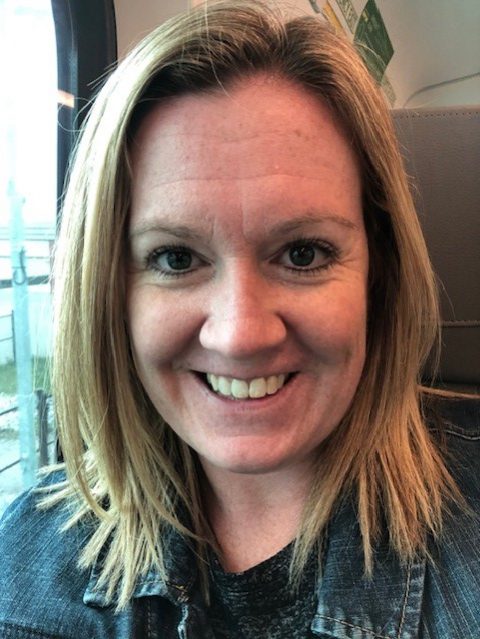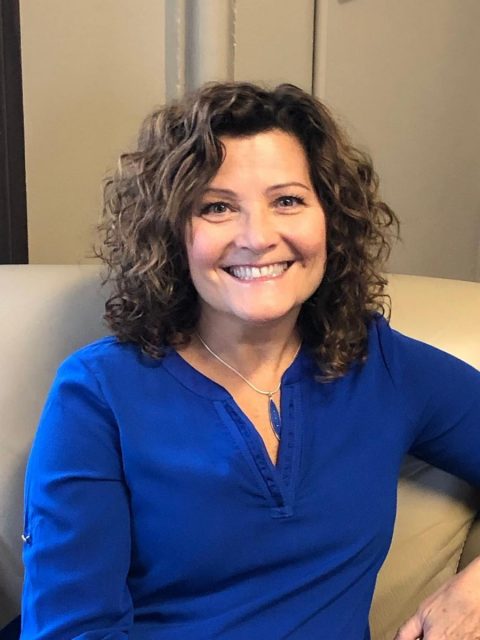Project Profiles provide a snapshot of a team’s journey through their Quality Improvement (QI) lifecycle and can be a great source of inspiration for your own QI work. You may find some similarities in the problems you are trying to address at your own agency!
Past E-QIP projects are listed below. Find out how these teams defined the problem they were trying to address, team composition, tools used (including meaningful client engagement!) to get to their “root causes”, change ideas and how these changes were tested before being introduced to their system.
CMHA Cochrane-Timiskaming: Domain Oriented Recovery Record: Impact of Recovery Plans (RP) on Client Recovery
Problem Statement
On December 12, 2016, 55 percent of clients have a recovery plan. Do these clients find the recovery plan helpful in meeting their recovery goals?
Aim
By June 1 2017, 90 percent of clients will report the recovery plan is helpful in meeting their recovery goals
EQIP Support to the Project
- QI coach: Laura Daly-Trottier
- Data Coach: Alexandra Clement
Project Overview
At CMHA Cochrane Timiskaming, they developed a documentation process called the Domain Oriented Recovery Record. When they were exploring their focus for a QI process, they knew they couldn’t tackle the entire documentation process, so they chose to focus in on the recovery plan (RP). They started by creating a run chart to look at the baseline data of how many clients have a recovery plan. They discovered that RPs were only in place for 55 percent of clients.
They wanted to gain insights from both clients and staff. Clients with RPs were an important part of the process. A survey of 21 clients confirmed that RPs are very important to the client’s recovery process. In fact, 100 percent strongly agreed or agreed that their RP was helping them meet their goals. Clients said things like “Excellent guide!”, “RP helps my anxiety.” “My RP helps me focus.” When a tool like an RP can elicit these kinds of reactions from clients, CMHA Cochrane Timiskaming’s commitment ensuring clients have RPs grew even stronger.
Their parallel process with staff, showed that staff had less confidence in the value and importance of the RP, with just over 60 percent of staff who agreed or strongly agreed that RPs helped clients meet their goals.
CMHA CT used a number of QI tools including the 5 Whys, Fishbone and Pareto, and ultimately identified three root causes:
- Lack of communication in the organization regarding the rationale for a Recovery Plan
- Lack of organizational accountability in ensuring 90 percent of clients have a Recovery Plan
- Lack of staff completing recovery plans.
Their change ideas are focused on supporting staff to consistently complete RPs with each client, and have offered workshops. Their post-recovery plan workshop showed that 30% of staff were still struggling with specific aspects of completing the plan, so the QI team is adding individualized support to address that challenge.
According to the Kathy King, QI Team Lead, “Our clients play a major role in the development of our change ideas.” The impact of this project has extended far and wide at this CMHA branch. In fact, Clark MacFarlane, the Executive Director, has starting using a QI lens in everything they do, including the little things.
Omer Ducharme, the Executive Sponsor for the EQIP project, summed it up well, “We’ve always had a commitment to quality because we know the better we get, the better the services will be for our clients.” And that’s what it’s all about.
CMHA Haliburton Kawartha Pine Ridge: Maximizing Social Enterprise Opportunities
Problem Statement
Catering Plus is a social enterprise which is operating in a deficit, therefore, putting employment of clients at risk.
Big Aim
Provide as many meaningful employment opportunities as possible to caterers (i.e. clients).
Project Aim
By March 31, 2018, Catering Plus will be operating as a sustainable business. Financial statements and charting will be used to measure a balanced or surplus budget by reducing catering costs from 116 percent to 90 percent. Employment opportunities will be maximized in a predictable way.
EQIP Support to the Project
- QI coach: Linda Saunders
- Data Coach: Nicole Adkin
Project Overview
Catering Plus is an organization that creates employment for those with lived experience in the mental health system and/or barriers to employment. The funding provided by the LHIN does not cover all costs (including client wages) and the overall program has to be self-funded or revenue neutral. As a social enterprise, Catering Plus is quite distinct among the EQIP projects. With the risk of sustainability to the program, the EQIP QI support was a welcome contribution.
They started by tracking down some key data points – food cost percentage, labour cost percentage and net sales chart. When those data points were put on a run chart, the large inconsistencies, challenges and opportunities became evident.
A team comprised of caterers, the chef, the small business assistant, program manager, the improvement advisor and the data coach met and put the Root Cause Tool to use. They started with a process map that identified 19 pain points that required further analysis. They prioritized these using a “dotmocracy.”
High labour costs was a top pain point they chose to explore further. As a root cause, they identified that some of the caterers struggled to start their shifts independently, resulting in longer shifts and inefficiencies. The group completed a Fishbone diagram, the 5 Whys process and a driver diagram to understand this better.
After discovering a variety of possible reasons for this problem, the team used the Driver Diagram process to identify the following primary drivers of what the caterers needed to be able to start independently. These included:
• They have all of the information that they need
• They have confidence to start on their own
• All groceries and supplies are available for the job
• The workspace is clean and prepped
Ultimately, they identified a number of change activities that led to 13 PDSA – Plan, Do, Study, Act – cycles. The focus was on how to lower food and labour costs to operate sustainably, better support and prepare the caterers in their role, and create efficiencies in operation. Change ideas explored included:
- Price changes to menu
- First cook position put in place, to increase efficiency and provide mentorship
- Scheduling calculator for predictable staff and food costs
- Food labelling/fridge journaling
- Updating “how-to” instruction sheets
- Sourcing different grocery stores, bulk buying and time of grocery shopping
For Sandy Woodhouse, the project lead, this process was incredibly insightful. As she says, “I now recognize the importance of taking the time to use the data. What we discovered was that there’s no magic bullet to solve the challenges, but there are things we can do – and the visual diagrams are helpful in identifying challenges and opportunities. Most importantly, we can never forget about the people side of change – this takes time and patience.”
At Catering Plus, the opportunity to participate in and learn from the EQIP initiative may truly be the difference between being employed or unemployed for people in their region living with mental health challenges or barriers to employment. This is a powerful example of the life-changing impact that a focus on Quality Improvement can have on people’s lives.
CMHA Kenora Branch: Increase Fluidity of the Assertive Community Treatment Team (ACTTT)
Problem Statement
Improve access to Assertive Community Treatment Team (ACTT) Program.
Aim
ACTT will reduce the number of clients on active caseload who score 2.8 or greater on the ACTT Transitional Readiness (ATR) by June 30, 2017 by 15 percent
EQIP Support to the Project
- QI Coach: Kim Elke
- Data Coach: Andrew Span
Project Overview
The Assertive Community Treatment Team (ACTT) services see some of the most vulnerable people with mental illness, and support them to live in the community.
CMHA Kenora Branch recognized that the flow-through of clients in their ACTT team was quite slow, and there was an assumption that they were keeping clients on the ACTT caseload longer than they needed to. This meant that the wait list for services is very long for others who need this high degree of support to live in the community.
Through the Be Mind Full EQIP project, their aim was to increase the ACTT fluidity.
At the diagnostic step, it became clear that the insurmountable root cause of the lack of fluidity was that there was a complete gap in services — there is no step-down service to transition clients to, and no psycho-geriatric outpatient services, and very limited services for anyone over the age of 55 with mental health issues.
In retrospect, perhaps the team should have concluded this focus and project after the diagnostic phase when this insurmountable challenge was discovered. However, the team pushed forward, and there were some creative solutions that were identified, including creating a step-down service within CMHA’s existing ACTT.
Despite the fact that they weren’t able to move through all the QI tools, the team and other colleagues at CMHA Kenora still learned a lot. Equally importantly, the ACTT team felt valued and appreciated by being included in the discussion and idea development for program changes. It was a good team building experience.
“By working through the critical thinking, diagnostic tools and project charter for this work, the team has gained a better understanding and appreciation of the QI process,” explains Kim Elke, CMHA QI Coordinator and EQIP coach. “We’ll definitely be using these tool in other projects in the future.”
CMHA Kenora’s project serves as an important reminder that not all projects are a huge success, but it’s important to learn from them and move forward. “There’s a lot of growth and innovation that happens with failure, and we’re making the most of that,” says Kim Elke.
CMHA Middlesex: Improving Access to Service
Problem Statement
There is confusion around access to service, and data demonstrates an average of 186.4 days wait times from assessment to service initiation with case management services in London (not including TCM or Outreach). There is inequity in service access depending on point of first contact.
Aim
To decrease “avoidable” wait times to case management services in London from to service initiation (this includes referral to assessment and assessment to service initiation) to under 14 days, by December 1, 2017.
EQIP Support to the Project
- QI coach: Linda Saunders
- Data Coach: Nicole Adkin
Project Overview
Seeking treatment is often a big step for someone dealing with a mental health problem. Access to services starts with an assessment, followed by a wait for services to start. At Canadian Mental Health Association Middlesex, they knew their wait times from assessment to service initiation were too long.
With the support from the EQIP initiative, CMHA Middlesex hopes to reduce the ‘avoidable’ wait times significantly. Run charts for 2015 and 2016 were done to look at the average days waited between assessment and when the client first started receiving services. In 2015, it ranged from 150 days to up to 225 days. In 2016, it was as low as less than 100 days and as high as 250 days.
The team then used a Fishbone diagram, the 5 Whys tool and a Driver Diagram to identify root causes. Based on what they learned through the diagnostic tools, they developed a future state process map so that the entire team could visualize where they were going and what they were aiming for.
The biggest change that is being implemented as a result of this QI project is that CMHA Middlesex is creating a new service model. Specifically, intake workers will become case managers which will help in avoiding the need for clients to tell their story multiple times, create more connection to the crisis service and have seamless follow up with those accessing those services. Not only will this reduce the wait time for services, it will also improve the patient experience and the continuity of care. CMHA Middlesex hopes to spread this shift in job function even further, to improve more services for clients.
CMHA Middlesex experienced some resistance to the idea of a QI project at the outset. But that shines the light on an important lesson, explains Jennifer Dowsett, “There was some staff resistant at first, but by participating in the process, we were able to build trust and cooperation, and we’re pleased that our team is on board now.” Now they hope to spread their learning across the organization.
CMHA Nipissing Regional Branch: Improving Client Referral to Decision Notification
Problem Statement
The length of time an individual waits between first point of contact and when they get notified about whether they are accepted into the Bridges Trusteeship Service.
Aim
By August 31, 2017, we will reduce the number of median days waiting for individuals between the submission of referral and notification of a decision by 20 percent.
EQIP Support to the Project
- QI coach: Laura Daly-Trottier
- Data Coach: Alexandra Clement
Project Overview
It can take a lot of effort for someone with a mental health issue to reach out for the services they need. So when they do, they expect the services to be responsive. It’s hard to wait 1.5 to four months to find out whether you’ve been accepted into the service.
CMHA Nipissing Regional Branch recognized that the time it took them to notify a client about whether they would be accepted by the Bridges Trusteeship Service was too long, and inconsistent at best. For them, the EQIP initiative was the opportunity to do something about this problem.
To tackle a process challenge, starting with a process map was an obvious first step. It was a highly visual way to see what was happening between the client’s first point of contact, and when the Bridges Service was reconnecting with them to notify them of acceptance or non-acceptance.
The map showed a total of 16 steps, of which only two were value added steps. Based on their findings, they decided to dig deeper and truly understand the client experience using two Experience-Based Co-Design (EBCD) methods – a questionnaire with 15 clients and in-depth interviews, captured on video, with three to 5 clients.
According to Daly-Trottier, “We want to be certain we would be focusing our improvement efforts on the right areas.” From these two activities, they’ll create an Emotion Map, showing the clusters of positive and negative emotions and what triggered those emotions.
Once their EBCD activities are complete, they’ll take the findings from both the staff process and the client process to guide their change ideas, to focus on improvements that will make this service better for clients.
Through their QI work so far, it’s clear that this program addresses an expressed client need in the community. Adding to the pressure on the program is that no other agency offers voluntary trusteeship services.
Through the EQIP project, CMHA Nipissing Region Branch is now tackling the root causes including the fact that the program is not user-friendly, and that data entry can’t be done in a meeting room when meeting with a client. And by using the QI tools, the team was able to break down the problem into bite-size pieces, and they have the tools to make sure the solutions are effective before fully implementing them.
“Our opportunity to be involved in the EQIP project is a game changer.”
The EQIP project isn’t only going to improve the waiting time for clients who have applied for the Bridges Trusteeship program. According to Jeanette Geisler, an EQIP team member at CMHA Nipissing, “Our opportunity to be involved in the EQIP project is a game changer for CMHA Nipissing. We are applying the skills and the tools we learned throughout the organization – it’s creating a shift and focus, and is embedding QI in a number of areas, like an admin assistant using a tally sheet for time cards.”
The team is now using these tools to work through the larger changes happening at the branch. And that means improved services for people with mental health and addiction problems in Nipissing Region.
“We will use these tools for a long time.”
CMHA Sudbury/ Manitoulin: Hand Hygiene
Problem Statement
Across CMHA Sudbury/Manitoulin sites, staff aren’t consistently and frequently completing self-audits, so we aren’t able to accurately measure compliance with 4 moments of hand hygiene which is putting staff and individuals at possible risk of illness.
Aim
To increase hand hygiene self-audit completion rates from 50 percent to 90 percent by November 30, 2017.
EQIP Support to the Project:
- QI coach: Laura Daly-Trottier
- Data Coach: Alexandra Clement
Project Overview
Proper hand hygiene is one of the most effective ways to reduce the spread of illness. At Canadian Mental Health Association Sudbury/Manitoulin, they recognized that there was an inconsistent approach to hand hygiene across their sites, and they weren’t able to measure compliance because self-audits weren’t completed consistently.
They used run charts to look at the cold and flu rates among staff by quarter, and to look at compliance rates with the four moments of hand hygiene. They dug deeper into the challenge by using the Fishbone exercise to identify the root causes. They also used a Pareto Chart to explore the question, “How can we improve the hand hygiene process to be sure that all staff are participating in the self-audit and that we are monitoring the practice of healthy hand hygiene practices every day of the year?”
Through these tools, a number of key root causes became clear, including the fact that hand hygiene compliance messaging was tied to accreditation, and not to staff health and safety. The self-audits were done infrequently, using a paper-based tool that was not user-friendly. To add to the inconsistency, staff didn’t see the value in completing the self-audits. Finally, being across four sites adds to the inconsistencies in approach – and there are no hand hygiene site champions.
The team agreed to start by creating an online self-audit hand hygiene tool, which is being tested through a PDSA – Plan, Do, Study, Act – cycle.
For Jessica Suban, “This is just a starting point. Even though the scope was narrow, the team gained a lot from their participation in the project. We are already using the QI tools in other projects, and have reviewed and revised our QI plan in light of our new knowledge.”
Hand hygiene compliance is a common challenge in many organizations. The learnings from this project can inform and inspire others to tackle this issue as well.
Jean Tweed: Increasing Access to Primary Health Care for Outreach Clients
Problem Statement
Because women with substance use, mental health and/or gambling issues have significant difficulty accessing traditional, office-based primary health care, the Jean Tweed Centre offers services (including direct care and referral services) to clients through videoconference (Ontario Telemedicine Network) in a number of its programs. While the outcomes of this service have been positive, broader uptake in the agency’s Pathways outreach program, which serves a particularly vulnerable and marginalized population, has been less than anticipated.
Aim
By June 30, 2017, 100 percent of clients in the Pathways outreach program, who have been identified as having an unmet primary health care need, will be offered person centered primary health care services, either in person or through the Ontario Telemedicine Network (OTN).
EQIP Support to the Project:
- QI coach: Laura Daly-Trottier
- Data Coach: Nicole Adkin
Project Overview
The Jean Tweed Centre (JTC) in Toronto is a community-based organization that provides a safe and supportive environment for women with substance use, mental health, and/or gambling issues. The JTC recognizes that women and their families have unique needs when seeking support, and offers a range of services that are responsive to the context of women’s lives. This includes primary health care services offered through OTN, which can help reduce the barriers women experience when trying to access services in person.
Despite the availability of this primary care service across the agency, use of OTN was limited in the Pathways program – an outreach program that supports pregnant and parenting women with substance use issues.
The opportunity to explore this challenge through the EQIP initiative was a welcome opportunity for JTC.
Application of the Fishbone exercise revealed that not all staff knew when a referral to the program was appropriate, and, when they did, most preferred not to use OTN to connect clients to the agency’s Nurse Practitioner. A number of root causes were unveiled with the use of the 5 Why analysis, including the need for training, support and resources.
Using the PDSA – Plan, Do, Study, Act – process, a number of change ideas were tested to tackle root causes, including creating resources to support staff to refer to this service, and training and resources to support effective use of OTN.
As April Furlong, EQIP Co-Lead, explains, “The process helped us get past the assumption that the technology was always the main problem. With new assessment guidelines in place we are starting to support staff to identify the need for this service.”
Chelsea Kirkby, EQIP Co-Lead, adds, “The E-QIP tools and templates, as well as the support of our coach, encouraged us to be concrete, focused and comprehensive.”
The Jean Tweed Centre has evidence that primary health services offered though OTN has reduced barriers to accessing treatment and that clients are highly satisfied with the program. Through the E-QIP initiative, the agency now has the tools to increase the reach of this service to clients served in its outreach program. This is a great example of how a focus on Quality Improvement can increase access to services for those who need them most.
MacKay Manor’s Community Withdrawal Management Services: Increasing Referrals from Emergency Departments to Community Withdrawal Management Services
Problem Statement
Lack of referrals and exposure to Community Withdrawal Management Services (CWMS), clients are not getting the support and monitored detoxification, causing repeat admissions and relapsing. Clients are in crisis in the hospital tying up emergency room resources and not receiving the most effective care. Our service area covers 7,400 square kms forcing a client to travel hundreds of miles usually without transportation causing them to go without services.
Aim
By September 30, 2017, five local hospital Emergency rooms will increase referrals from 0 to 10 referrals
EQIP support to the Project
- QI Coach: Laura Daly-Trottier
- Data Coach: Abel Gebreyesus
Project Overview
MacKay Manor is a long-term recovery home for men with alcohol and drug-related problems located in Renfrew, Ontario. Within MacKay Manor, they offer the CWMS.
People with acute addictions are high users of the health care system. The CWMS at MacKay Manor knows that part of the challenge is that Emergency Rooms (ERs) don’t have the capacity or resources to treat people requiring withdrawal, and don’t know where to refer them.
Since 2007, MacKay Manor has been “knocking on ER doors” on behalf of CWMS, but with little success. When the EQIP initiative came along, they say it as a great opportunity to take a more formal QI approach to this long-standing problem.
The QI initiative at CWMS aims to tackle:
- Problem of readmission versus getting treatment
- Lack of knowledge and understanding of the community-based addiction treatment services
The team worked to uncover the root causes, using the Fishbone Diagram that examined places, providers, people, processes, procedures and policies. They then used a driver diagram to explore even further.
The team then used the PDSA Cycle – Plan, Do, Study, Act – to test three change ideas:
- Attending morning huddles in the ER
- Send introduction letters to four hospitals
- Making random visits to the ER
The team found that the first two ideas were very effective, while random visits to ERs were completely ineffective.
The CWMS team have worked extensively with one of the five ERs in their region, and through that single partnership, the team has seen a notable increase in referrals. The team is now building on the lessons learned from that first ER as they begin working with a second ER.
From that one hospital, the team has had nine referrals. It’s a huge step forward over the number of referrals – zero – that they received over the same period last year.
Cheryl Chute, the project lead, celebrated the team’s achievement. “I never realized that doing small things would make such a big impact,” she said. CWMS’s QI coach, Laura Daly-Trottier, was equally impressed by the team’s vision and perseverance. “They took the QI bull by the horns and they really used the concepts to make a difference. One of their ideas didn’t work, but that didn’t stop them. They kept pressing forward.”
The CWMS EQIP project tackles a very significant system challenge: the “emergency room revolving door.” They’ve already made a difference for nine people who wouldn’t have been referred to withdrawal services at the same time last year. And we know this is just the beginning.
Oak Centre Clubhouse: Improving Integration of OCAN Data into Recovery Plans
Problem Statement
Members recovery plans do not have Ontario Common Assessment of Need (OCAN) information integrated in to them, which limits the potential of meeting their needs through services and programming.
Aim
50 percent of member recovery plans will have OCAN information integrated in to them by January 31, 2018.
EQIP Support to the Project:
- QI coach: Tara McKendrick
- Data Coach: Andrew Span
Project Overview
Oak Centre Clubhouse is a community mental health program serving people in the Niagara Region who have mental health problems. They support people to go back to work and school, provide assistance with legal/family/transportation/housing issues, and help people navigate mental health services such as the Ontario Disability Support Program, Ontario Works and Canada Pension Plan.
In looking through the recovery plans for Oak Centre members, they realized that many were missing the important information and insights gained through the OCAN process.
Oak Centre knows just how important it is for an OCAN to be completed for each member as it improves their ability to be successful in their recovery. OCAN is a consumer-directed tool used in Ontario that has been proven to support the recovery process. It creates a full client profile, helps identify barriers to recovery and supports the member and staff to create plans to address those barriers.
Oak Centre used the Fishbone and Pareto Chart as their diagnostic tools to analyze the root causes of why OCAN information is not included in recovery plans. It became clear that there were competing priorities between unit and individual needs, lack of staff training and supervision, and a lack of technology infrastructure. This led the team to identify three high priority items for change:
- Prioritization and timing
- Data entry and technological capability
- Lack of supervision and accountability
Using these three items, the team worked through a driver diagram to identify the change ideas, which included developing a staff OCAN schedule and assessment reminder, using a staff mentorship system, offer regular OCAN training for staff and making changes to maximize space and flow, to name a few.
Oak Centre has created a list of questions, that will now be tested using PDSA – Plan, Do, Study, Act – cycles. This will allow them to test their change ideas, and adapt them along the way.
According to Sylvie Morgan, co-lead of the EQIP project, “For us this was unfamiliar territory, and the EQIP project gave us the tools we needed to identify change opportunities. The whole process helped us challenge our preconceived notions, which wouldn’t have happened otherwise.”
As a result of Oak Centre’s participation in the EQIP initiative, more members will have completed OCANs, which will ultimately improve their quality of life and recovery process.
This project is a great example of how having access, understanding and skills to use QI tools can make a difference in their member’s recovery process. Cristina Grossi, co-lead with Sylvie, gave a ringing endorsement of EQIP’s impact, “This must be repeated across the province.”
TEACH: Mississauga Halton Region Enhancing & Sustaining Peer Support Initiative funded and supported by the Mississauga Halton LHIN
Aim
By November 30, 2017, we will improve by 30 percent the number of people using peer support who perceive that the service they receive is aligned with underlying values: hope and recovery; self-determination; empathetic and equal relationships; dignity, respect and social inclusion; integrity, authenticity and trust; health and wellness, and; lifelong learning and personal growth.
EQIP Support to the Project
- QI coach: Laura Daly-Trottier
Project Overview
Peer support is not the first thing that comes to mind when we think about what we can do to improve the experience and outcomes for those accessing mental health and addiction services. But the Mississauga Halton LHIN’s System Integration Group for Mental Health and Addictions (SIGMHA) identified peer supports as the highest priority for addressing mental health and addiction service needs in their region in 2014/2015. The MH LHIN’s Enhancing and Sustaining Peer Support initiative, led by Support and Housing-Halton through its peer support initiative: TEACH (Teach Empower Advocate Community Health) has been in place since 2015 to address this priority area. Widespread throughout the MH LHIN area, the initiative has 40 paid peer positions embedded across 11 accredited LHIN-funded health care organizations including hospitals and community providers.
The initiative is making a difference in the health outcomes for those living with mental health and addictions. It provides hope, empowerment and self-determination to individuals, supports recovery-oriented practice within health care organizations through consultation and conversations with co-workers, peer workers, peer supervisors and leaders within the partner health care organizations. Altogether, this helps create workplaces focused on personal self-care and wellness.
The team knows that peer support is not always well understood within the formal walls of the health care system. The TEACH team immediately recognized the opportunity of getting additional QI support from E-QIP’s province-wide initiative to enhance their work to increase the understanding of the value of peer support.
“It was a perfect opportunity for us to add more QI bench-strength and knowledge to our project,” said Betty-Lou. “Equally important, it was an opportunity to collaborate with like-minded organizations across Ontario, and even showcase our work so that many more people living with mental health and/or addiction issues in our province can benefit from peer support as part of their formalized health care interaction. Being involved with E-QIP has given the work even more focus.”
They’ve learned ways to use QI mechanisms such as Root Cause Analysis, Fishbone Diagram, The 5 Whys and Pareto Charting to identify their problem statement, root cause, change ideas, triangulate scope / boundaries, create an aim statement, identify key milestones/ timelines and develop barriers and mitigation strategies. All these tools led them to develop their E-QIP Project Charter.
Through this work, ultimately, everyone agreed that the root cause of the re-occurring issue of clarity and definition of peer support roles.
Peer Support is based on values including: hope and recovery; self-determination; empathetic and equal relationships; dignity, respect and social inclusion; integrity, authenticity and trust; health and wellness, and; lifelong learning and personal growth. They want to determine the degree to which these values are perceived to be present by people receiving peer services. The results of this will drive additional QI processes regarding trainings, support, organizational culture and philosophy shifts to foster values based peer support.
As Laura explains, “They have applied the tools in a practical way, sharing their new found knowledge with others helping to increase the capacity for quality improvement in the sector.”
Their work has already inspired comments like this from a person who received peer support, “Peer support was a life saver for me. It was the first time that I felt someone understood me from over a dozen hospital admissions where there had been no peer workers.” With their continued focus, their work will reach more people with mental health and addiction problems.
Ottawa Salus: Running Group – The Client Experience
Problem Statement
There is a lack of data of the experience of the participants of the Salus Running Group.
Aim
To increase the quality of life (anxiety, self-esteem) of clients who participate in the Salus Running Group by 15 percent by December 31, 2017.
EQIP Support to the Project
- QI coach: Linda Saunders
- Data Coach: Nicole Adkin
Project Overview
Running is hard. But Ottawa Salus Support Housing and Mental Health Services, that fact doesn’t deter the Recreation Therapy staff who offer a Running Group as a positive recovery focussed program for a small number of clients. Although there is anecdotal information and examples of the importance and impact of the running program on participant’s recovery, there has never been a formal way to capture data on the client experience.
The EQIP initiative is about to change that. The Ottawa Salus group used many of the EQIP tools to better understand the situation, and identify the root cause analysis.
Although their focus is to get more participants in the running group, and for participants to maintain running as a key component of their recovery longer term, they knew they had to start one step behind that – to collect data about the running experience.
The lightbulb moment for this team came early on, when they were at an EQIP training session. It was then that we realized we needed to get feedback directly from the participants to inform their improvement focus.
They used Experience-Based Co-Design methods, starting with an emotions statement for each step in the process. “Seeing the enthusiasm from the team when they heard the feedback from participants, was really inspiring and encouraging for the RTs who oversee the running group,” explains Joanne Cormack, Project Lead.
To see and hear the progress from the beginning of the process to the end, gave insight to those running the group.
After identifying the root causes of why running is hard, the team was able to identify some change ideas including – taking training slowly, having previous runners talk to new group members, providing education sessions on key techniques important for running, offering flexibility in running schedules, among others.
As their next step, the results will be presented back to the participants, and together they will focus their improvement work on the ones that will help them work towards their next goal: how to increase participation in the group, and increase the number of people who sustain running long term.
St. Stephen’s Community House: Reduce Corner Drop-in Restrictions
Problem Statement
Many clients have complex needs and as a result there are clients who exhibit inappropriate behavior (i.e. aggressiveness) and receive a service restriction. Restrictions impact the client’s ability to access services; negatively impact client/staff relationship; and do not change client behavior.
Aim
To reduce the average time length of restrictions by 30 percent by December 31st2017
EQIP Support to the Project
QI coach: Kim Elke
Data Coach: Andrew Span
Project Overview
St. Stephen’s Community House Corner Drop-in program serves a very vulnerable and marginalized population in downtown Toronto. Their clients who are caught in a cycle of street life, chaotic substance use and poverty often have very limited access to services and supports.
Each year, they serve close to 200,000 meals, secure housing for nearly 446 people and help approximately 575 people enter addiction services and harm reduction support.
Unfortunately, there are times when clients behave inappropriately at the Corner Drop-in – for example, they are aggressive or violent – putting other clients and staff at risk. In these cases, the client is asked to leave and is not allowed to attend the Corner Drop-in for a period of time (called a service restriction). Although this addresses the immediate concern, it leaves the client without access to one of the limited services they are eligible for, it doesn’t change the client behaviour, and has a negative impact on the client staff relationship.
The staff want to ensure their services are as accessible as possible, by reducing the number of and length of drop-in centre service restrictions which aren’t serving anyone well. St. Stephen’s Community House was pleased to be accepted as one of the EQIP projects so that they could tackle this challenge.
They started by developing run charts to look at the average monthly length of restrictions, followed by a Fishbone diagram to identify root causes. After removing the root causes that they had no control over, the team voted and determined the top three primary drivers:
• Lack of consistent model for reintegration
• Staff perception
• Equitable treatment of all clients
Next, they used the 5 whys tool to dig deeper into the issue, and identify change ideas.
“For us, the QI tools were extremely helpful in getting past the assumption that the only solution was more resources,” explains Caroline Jemmott, Manager of Drop-in and Housing Services. “We learned a lot from the data, and were able to identify innovative change ideas.”
St. Stephen’s put their focus on
- Applying consistent restrictions:
- Collecting data and incident information
- Streamlining the reintegration process, including assigning dedicated staff to this
- Implementing a restorative justice model
Through an analysis of the data, they were able to debunk the myth that there were a high number of repeat offenders, and they were able to commend themselves for being more consistent than they thought about restrictions for violence.
The St. Stephen’s Community House Corner Drop-in QI project is an important reminder that there are innovative solutions to some of the most challenging problems. For those people who use the Corner Drop-in, having a better, more consistent process for managing service restrictions means they will have more access to a warm meal and community supports. For this highly vulnerable population, that could be the difference between life and death.
St. Jude Community Homes: Coordinated Discharge Planning
Summary
We have noticed that upon discharge from hospital there is no communication between hospital staff and St. Jude staff which creates a safety problem.
Aim
We will increase communication between hospital, health service providers and St Jude staff regarding discharge with a minimum of one contact per hospitalization for 100 percent of hospital approved discharges by January 2018.
EQIP Support to the Project
- QI coach: Tara McKendrick
- Data Coach: Abel Gebreyesus
Project Overview
St. Jude Community House is a supportive housing provider in Toronto with 92 units open 7 days a week. Support staff are onsite 12 hours each weekday, and eight hours on weekends, with a caretaker on call 24/7.
Although transitions in health care are often where continuity of care falls through the cracks, the transition to supportive housing – which isn’t well understood by most health care providers – is even more challenging.
For the staff at St. Jude’s Community Homes, they saw this lack of coordinated discharge planning between them and the hospital as more than a nuisance – it was causing safety issues for them and their clients.
When the opportunity to get involved in the EQIP initiative came up, St. Jude’s was quick to respond seeing this as an opportunity to tackle a long-standing problem.
According to Shannon McCauley, Project Lead, the QI tools they learned how to use through the EQIP project were incredibly helpful in “getting past the frustration that we can’t effect change in the hospital, and got us focused on what we can do.”
St. Jude’s used the Fishbone diagram as their diagnostic tool, and it “created much needed clarity to our known problems,” explains Shannon.
The root causes were identified as:
- Lack of Education and awareness of St. Jude and supportive housing within hospitals and other health service providers
- Lack of clarity of staff role and gaps with access to supports
- No central system for staff to receive phone calls after hours
- It’s not simple for outside support and residents to access staff if their assigned worker is off site
Using a driver diagram, they were able to dig deeper and begin identifying change ideas.
Their next steps are to start testing their change ideas using PDSA– Plan, Do, Study, Act – cycles, and creating run charts to monitor their process measures. One of the biggest change ideas is creating a single point of access for St. Jude’s staff, which they will be testing through a PDSA starting with one Health Service Provider. And they’ve identified a few more:
- Creation of a flow chart for staff when a resident is hospitalized
- Include a line in the job description for resource staff to answer the general support phone line
- Create scripts for answering the phone, redirecting calls and voice mail messages directing callers to new numbers
By streamlining the process for health service providers and clients to contact the staff at St. Jude’s Community House, clients will experience an easier transition back to their homes, and hopefully reduce the rates of re-admission to hospital because of the lack of follow up care.
Through their involvement with EQIP, St. Jude’s is hoping to make a habit of quality improvement.
Madison Community Services: Quality Improvement of Case file Completion
Problem Statement
In January 2016, while reviewing targets for fiscal year end, it was noted that the timeliness of documentation in client records was not in accordance with Madison policies. This impacts on Madison’s ability to ensure safety for our clients and best meet their needs through effective planning.
Aim
By September 30, 2017, 100 percent of OCAN, Case Notes, and required documentation will be completed in the client file within established timelines noted in the organization’s policies.
EQIP Support to the Project
- QI coach: Linda Saunders
- Data Coach: Abel Gebreyesus
About Madison
Madison Community Services is a multi-service agency that supports people with chronic mental health and addiction issues. Madison began in 1977 as one of the first community-based supportive housing agencies in the province. Its first supportive housing property was on Madison Ave, in downtown Toronto – which was how the community based agency it got its name.
Madison recognizes the important role that completed documentation plays in ensuring that clients are able to reach their goals. Through a review of client files, it became clear that timely completion of Ontario Common Assessment of Need (OCAN) and case notes was an issue and would affect this part of service delivery.
Beginning with a process map to understand the steps in the data collection process, the Madison team was able to understand documentation flow that followed a client’s service path and prioritize actions. The project team worked with their coaches to gather data as a next step. This has been a bit challenging due to the structure of and reports available in the IT system. However, the team has continued to work to get accurate estimates and definitions of documentation completion rates.
Using the fishbone diagram, a larger team was able to begin identify root causes that interfere with timely documentation. Through that same process they used a “dotmocracy” system to vote on and identify the most common problems. They then translated that to a Pareto chart, to see the frequency and detail of the root causes.
One issue that Madison identified as key to moving forward with the project was the definition of completion, particularly of the OCAN as this is one of the first steps in developing recovery plans and completing relevant case notes. Ultimately, they developed a four-part definition, which they expect will help in narrowing in on change ideas to target this problem.
“Although we started with a narrow focus, in working with our coach, we expanded it a bit. However, every time we dig a bit deeper, we discover new issues that are interconnected”. This speaks to the importance of a robust diagnostic process in ensuring a successful and sustainable QI projects.
From the Executive Director’s perspectives, Jean Stevenson, “The EQIP project and tools were really helpful for us. It was a real eye-opener for us to identify some of the challenges we have. We believe this learning will have a lasting impact on us and our services and ultimately improve our services significantly and better serve our clients.”
























